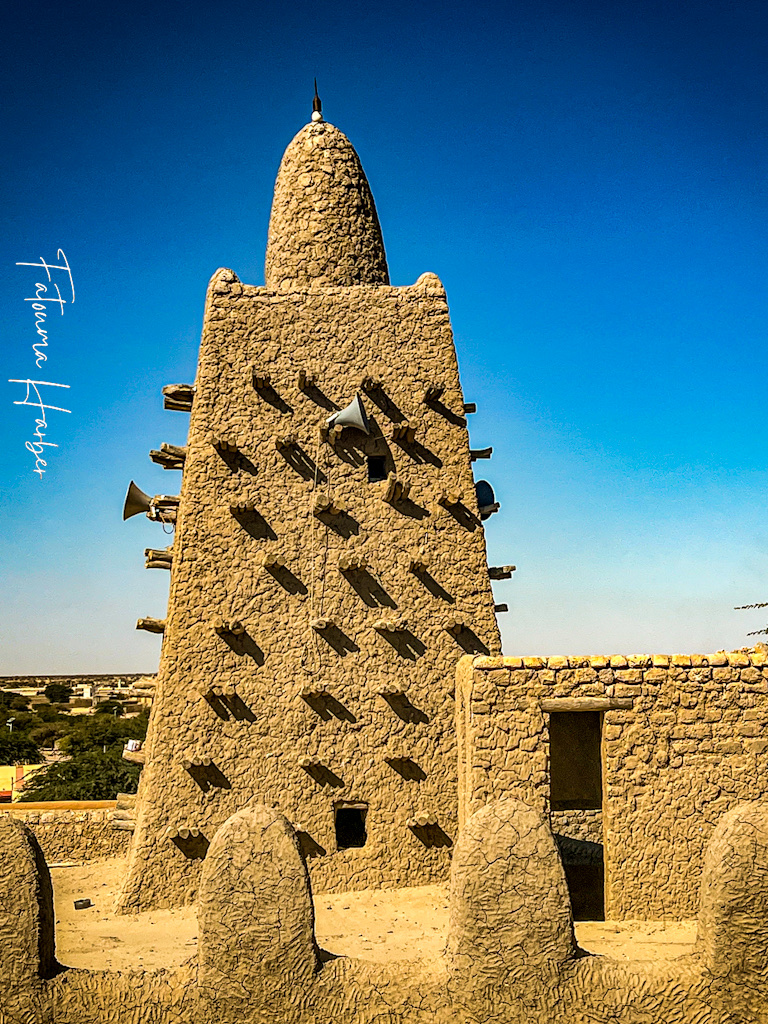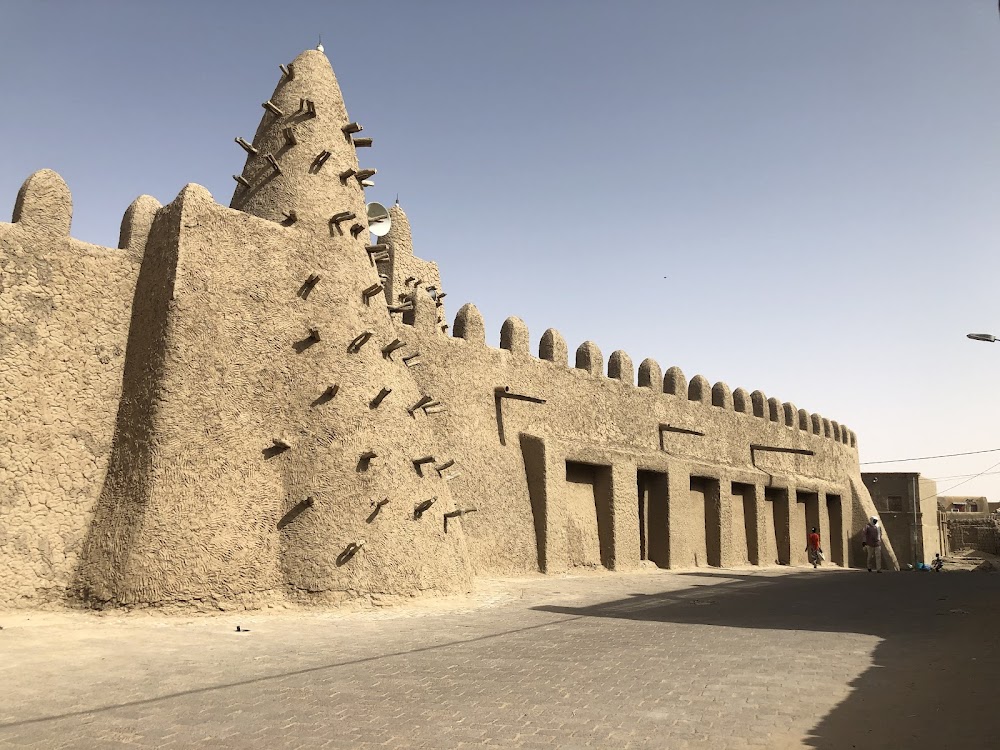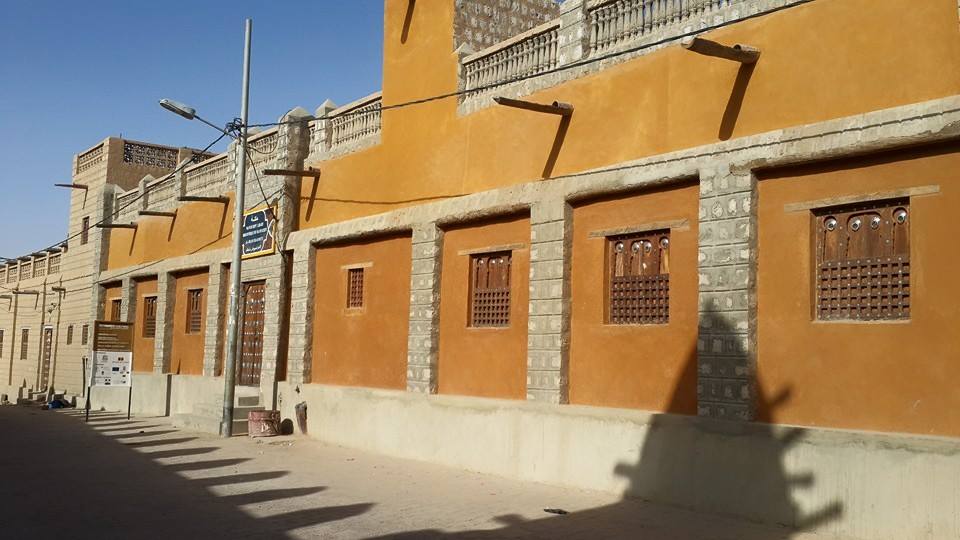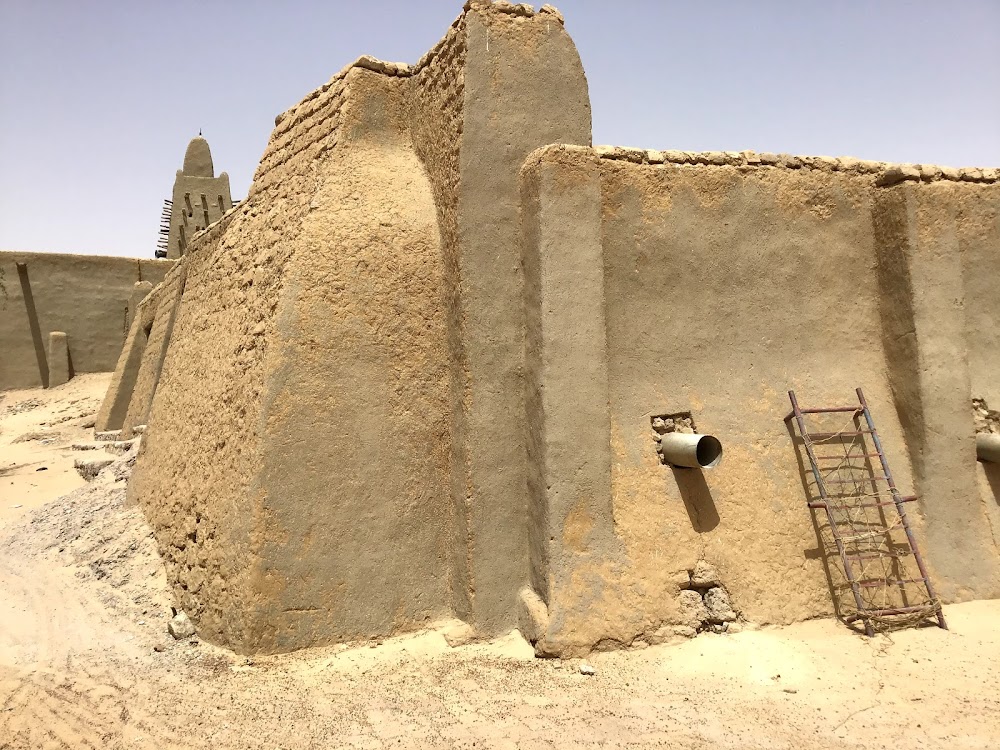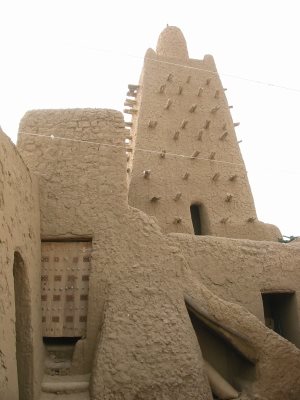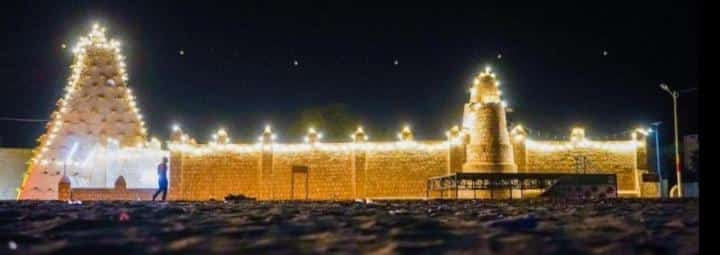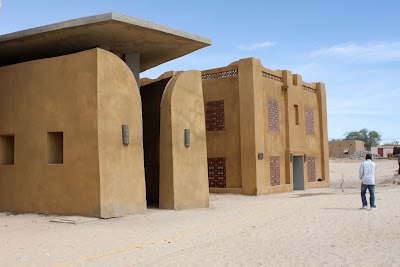Djingareyber Mosque (Mosquée Djingareyber)
Overview
Djinguereber Mosque: A Testament to Architectural Ingenuity
Nestled in the historic city of Timbuktu, Mali, the Djinguereber Mosque stands as a remarkable symbol of architectural brilliance and cultural heritage. Constructed in 1327 under the auspices of the illustrious Malian Emperor, Mansa Musa, this mosque is a prime example of traditional Sahelian and Sudano-Sahelian mud brick architecture, showcasing the ingenuity of its time.
Mansa Musa, often hailed as one of the wealthiest individuals in history, enlisted the expertise of architect Abubakar al-Sahili for this monumental project. Al-Sahili, an Andalusian poet and architect, utilized local materials and labor, marrying the skills of regional craftsmen with his visionary design. The mosque was built using sun-baked earth bricks, mortar composed of sand and lime, robust wooden beams, and adobe plaster—resources that were abundant in the area.
The architectural design of Djinguereber Mosque features traditional elements such as thick walls supported by protruding wooden beams. These beams not only provide structural support but also serve as scaffolding for regular maintenance work, a distinctive characteristic of West African Islamic architecture. Dominating the skyline, the mosque's towering minaret acts as a beacon for worshippers and travelers alike.
Over the centuries, the mosque has undergone periodic maintenance to safeguard its integrity, given the delicate nature of its materials. Community involvement is central to this process, particularly during replastering events known as "crepissage." These gatherings are not just maintenance tasks; they embody the mosque's role as a vital hub of communal life in Timbuktu.
Beyond its architectural beauty, Djinguereber Mosque has historically functioned as a center of learning. Its madrasah, or Islamic school, attracted scholars from across Africa and the Arab world, transforming Timbuktu into an intellectual powerhouse by the 15th century. The mosque housed thousands of manuscripts, covering diverse subjects such as astronomy, medicine, and law, significantly enriching the intellectual and cultural landscape of the region.
In recent years, Djinguereber Mosque has faced environmental challenges, including desertification and flooding, which pose threats to its structure. However, both local and international organizations, including UNESCO, have taken active steps to ensure its preservation. Designated as part of the "Timbuktu" UNESCO World Heritage Site since 1988, the mosque's global significance is firmly recognized.
Today, Djinguereber Mosque stands not only as a place of worship but also as a powerful reminder of the architectural brilliance and cultural richness of the Mali Empire. Visitors to this historic site can immerse themselves in its rich history while witnessing its ongoing importance within the community. Preservation efforts continue to guarantee that this emblem of Timbuktu's golden age remains a source of pride and inspiration for future generations.
With its captivating blend of history, architecture, and community spirit, Djinguereber Mosque offers an engaging insight into Mali's cultural heritage, underscoring the critical importance of safeguarding such sites for the benefit of those who will come after us.


